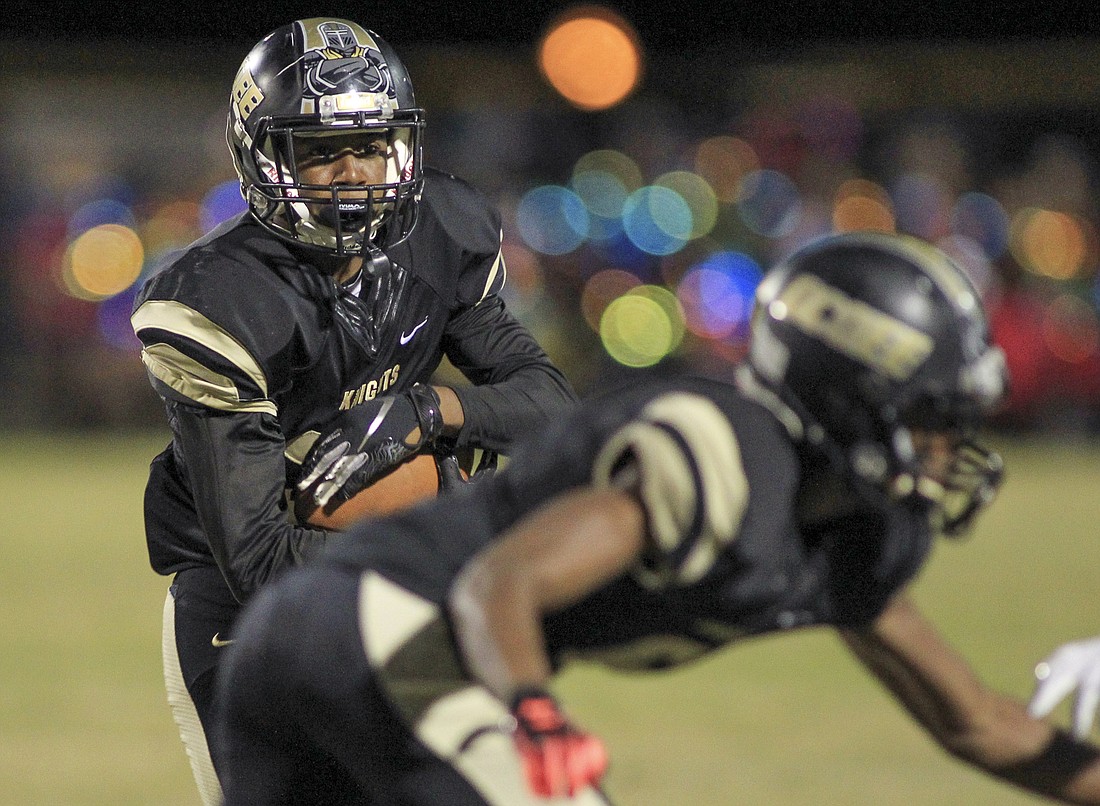- January 10, 2025
-
-
Loading

Loading

Change seems to be a constant as it relates to football and the Florida High School Athletic Association.
The most recent of these changes came Monday, Jan. 28, when the FHSAA Board of Directors endorsed the recommendation set in place by the Football Advisory Committee relating to the use of a Ratings Percentage Index to rank football teams for the state playoffs.
Unlike the old system — which took into account a team’s winning percentage and their opponent’s winning percentage — the new RPI will include those two metrics, as well as the winning percentage of the opponents of opponents. The first two metrics count for 35% of a team’s ranking, while the newest addition will count for 30%.
For many coaches it’s a positive change from the playoff point system that was used last year.

“It’s better than it was over the last two years,” said Foundation Academy head coach Brad Lord. “There have been teams that got into the playoffs that my middle-school team could have beaten.”
One of the biggest issues is that not all team’s schedules are what they may appear, and it has led to many blowouts in the first round.
A team could finish with eight or nine wins throughout the regular season, but if its schedule is padded with sub-.500 opponents, then its success could be misleading. It’s a topic that has been a thorn in the side of coaches who want to see playoff-worthy teams in the tournament.
“My first year at Fort Pierce Westwood, we were 3-8 and had a playoff game,” Ocoee head coach Aaron Sheppard said. “Honestly, I didn’t deserve to be in the playoffs. This would eliminate that, which is what they’re trying to do. I’ve seen it on all sides — it’s never going to be perfect — but I do think that this way does ensure the best teams are playing in the playoffs.”
Although a team’s region can have an impact on its schedule — for better or for worse — the new change will force teams to schedule better opponents.
It’s a change that will help benefit schools such as Lord’s Foundation team. Its strength at the smaller-school level makes it difficult to schedule in-region teams.
“The problem is with the new 1A to 4A you can play anyone, but there are no rivalries — I think I have two teams in the region that will play me,” Lord said. “With us being a pretty good 2A program, not a lot of 2A teams will play us, so we always have to play up.”
By making the field more competitive and by renewing old rivalries, there’s a hope by the FHSAA and teams to make the whole experience more fan friendly.
Having more excitement on the field by avoiding a barrage of blowouts also could help with another key issue — dwindling fan attendance, especially in the playoffs.
"I’ve seen it on all sides — it’s never going to be perfect — but I do think that this way does ensure the best teams are playing in the playoffs.”
— Aaron Sheppard
No one wants to sit through a 60-0 drubbing, whether they be in the stands or on the field. However this season’s schedules already are set, much to the dismay of many coaches.
“That’s not even fun to coach,” said Lord with a laugh. “It will make it better. I wish they made a quicker decision (though), because even my schedule, which is a pretty tough 2A schedule, I might have scheduled a little differently. I don’t really have a bad team on my schedule now, but I might have taken a chance and played a 6A team.”
Although most coaches say the new RPI is an improved metric compared to the point system used last year, there is always progress that can be made in the future.
Sheppard said he is pleased with the new requirement change but would have preferred going back to an older system.
“The best means, in my opinion, would be the two teams from each district and then the wildcard — like they use to do,” Sheppard said. “When I was in high school, a long time ago, they use to have a wild card, if there was a third team in the district that deserved to go, then they would go. You’re very rarely going to have more than three teams that deserve to go. That would be the easiest way to do it.”